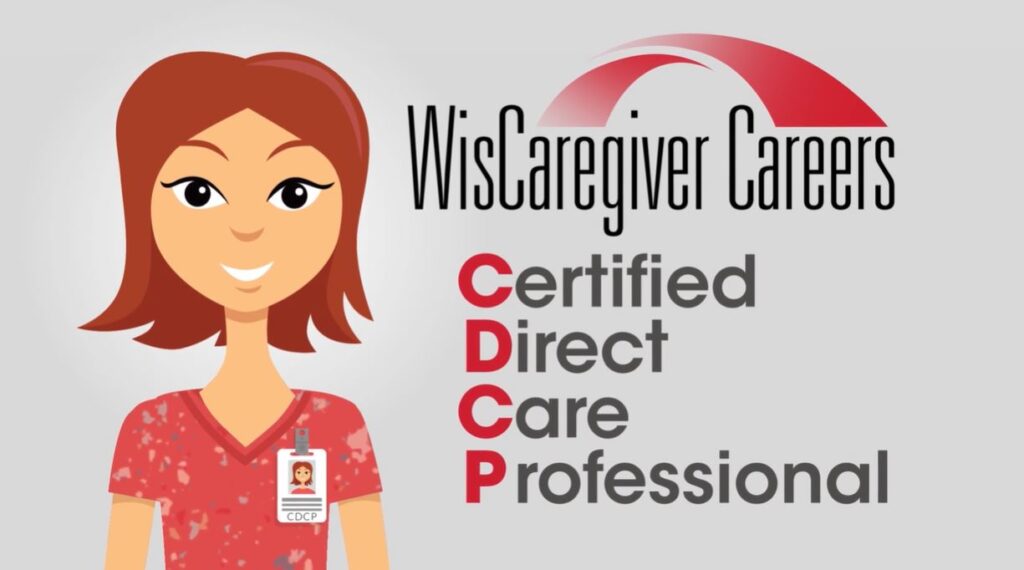Will Wisconsin’s Direct Care Program Change the Field?

When Wisconsin launched its WisCaregiver Careers program in 2018, the state’s nursing homes were facing a dire worker shortage; nursing assistant certifications were down dramatically from previous years, and nursing homes were struggling to fill open positions. Five years later, WisCaregiver Careers—a comprehensive training, recruitment and placement, and retention program for nursing assistants run by state agencies and providers—has been so successful that the state is now expanding it to include home care workers. In the process, Wisconsin is creating something akin to a universal worker certification program for the home care workforce, one that will, when launched in May of this year, provide home care workers with standardized training and certification, access to a job registry, recruitment and retention bonuses, and a career ladder in the health care industry.
“WisCaregiver Careers has been one of the most successful recruitment and training statewide interventions we’ve seen in recent history,” said Robert Espinoza, PHI’s Executive Vice President of Policy, noting that the program has recruited thousands of nursing assistants, no small feat in a state that’s heavily rural. The program’s expansion to include the home care workforce, Espinoza added, “is really pathbreaking, compared to what other states are doing.”
The need to include the home care workforce in the program is clear—in 2017, a PHI report noted that while the population of adults over the age of 65 in Wisconsin is expected to grow by 72 percent from 2015 to 2040, driving increased demand for home care services, hourly wages (when adjusted for inflation) for home care workers had declined during the previous decades. In 2021, according to data compiled by PHI, the median wage for home care workers in the state was only $13.65/hour, and low wages are a major reason why one out of every two home care workers in the state leaves the workforce every year. As in most other states, home care workers generally receive inadequate training and few advancement opportunities. The state’s rural communities are and will be hit particularly hard by these workforce challenges. As our 2017 report found, the state’s rural population age 65 and older will increase dramatically in the coming decades, yet the number of women age 20 to 64—the demographic that is most likely to fill caregiving jobs—will decline during the same time period.
In 2022, with funding from the federal government through 2021’s American Rescue Plan Act and technical assistance from PHI, the state began planning the expansion of the WisCaregiver Careers program to home care workers and agencies, and anticipates fully launching in May, with the goal of training 10,000 new home care workers in the first year. Kevin Coughlin, the program’s administrator in Wisconsin’s Division of Medicaid Services, recalled that in the early years of the WisCaregiver Careers program, home care providers would ask him, “Why aren’t you doing this for us as well?” Coughlin added, “What we found in WisCaregiver Careers was that free training, free testing, and a sign-on bonus or retention bonus really resonated with a lot of people. And so all along, we thought, if we are able to get this direct care workforce initiative up and going, what we wanted to do is really leverage the lessons learned” with certified nursing assistants.

Earlier this month, Wisconsin released a new animated video to help recruit candidates into its WisCaregiver Careers program.
To that end, the state has created a set of core competencies that all home care workers who go through the program will be trained in, and all workers will receive the same Direct Care Professional certification at the end of the training process. After successfully completing the training, workers will be placed on a registry and connected to local home care agencies, and providers and once hired, workers will receive sign-on bonuses and a retention bonus after six months. Providers, Coughlin said, will also receive support from the state to “create a culture where people want to stay and work in this organization.”
The goal is to both professionalize the workforce and provide a career ladder for home care workers who wish to continue in the health care industry. “Professionalizing this field has been a major theme of what we’re trying to do. We’ve heard from direct care workers that this is hard work, and they don’t get the recognition they deserve,” Coughlin said. “And I think this certification really will enhance their standing, similar to a CNA. And then with that credential, [better] pay and other benefits can start coming along with that.” According to Coughlin, the state is also exploring opportunities where the training hours for the Direct Care Professional certification to be applied toward CNA certification. “We feel so much of what the direct care professional does is very similar to a CNA,” he said.
Coughlin added, “We felt strongly that if we align this next iteration and expand the tent of who are WisCaregiver individuals, it’s now going to be all the way from our home- and community-based services, people getting services in their homes, all the way through nursing homes. And then that also opens the possibility of that sort of career pathway and career ladder.”
With this expansion, Wisconsin is leading the way in creating a new model for professionalizing the home care workforce. “This kind of universal worker approach, and this model where workers are trained in a standard set of core competencies, and then they’re able to carry that recognized credential with them, makes the workforce more versatile and the job more appealing,” PHI’s Espinoza said, adding, “This is really what other states and the sector should do.” Emily Dieppa, PHI’s Vice President of Workforce Innovations, agreed. “We see other states that are making strides, but aren’t necessarily where Wisconsin is,” she said. “This is a harbinger of what could be possible.”
According to Coughlin, PHI’s assistance and technical expertise, which has informed the training, recruitment, and marketing aspects of the Certified Direct Care Professional certification, has been invaluable in getting the program off the ground. “I don’t think we’d be where we are without the support from PHI,” he said. Coughlin added, “I think we’re just extremely excited about this opportunity. Because to us, it’s once in a lifetime to have this. We’re very hopeful that we’re going to get a lot of individuals that are going to sign up, get the training, start working, and that we’re going to fill vacancies. And that these workers are going to feel good about doing that difficult work, because they’re going to have the skills to be able to do that successfully.”





